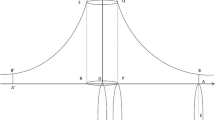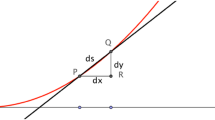Abstract
In this paper, we list some of the areas of the Australian curriculum that have links with the concept of infinity. We do this in order to promote a discussion about what aspects of infinity should become familiar to primary teachers. From our viewpoint, infinity has connections with Algebra, Art, Geometry and Measurement, Probability, Science and Technology and is an essential ingredient in the teaching of mathematics in primary school.
This work was first motivated by the concern that for many young children, infinity appears to be mysterious and mythical (see Pehkonen and Hannula 2006 based on a survey of 300 students aged from 11 to 14 years old), but there is no reason why this should be the case. Then, as we looked further into the curriculum, we saw that infinity was closely linked to many areas of both the primary and secondary curriculum and that an understanding of the concept of infinity could improve students’ learning in a number of topics.
We organise the paper by first considering the nature of infinity. In the four sections following infinity, we note that there are important parts of curriculum mathematics that are fundamentally affected by infinity in some way. In these sections, we discuss places where infinity and the collateral concept of convergence are critical for certain aspects of Geometry, Number (decimals and measurement), Algebra and Probability. These are followed by a discussion of the relevance of these to teaching and what understanding of infinity in these concepts might be worthwhile for teachers to know in order to help their students’ search for knowledge and to gain a deeper understanding of specific topics in the curriculum.







Similar content being viewed by others
References
ACARA. (2018). The Australian Curriculum. Australian curriculum and reporting authority Retrieved from http://www.australiancurriculum.edu.au/
Barros-Castro, R. A., Córdoba-Pachón, J. R., & Pinzón-Salcedo, L. A. (2014). A systemic framework for evaluating computer-supported collaborative learning—mathematical problem-solving (CSCL-MPS) initiatives: insights from a Colombian case. Systemic Practice and Action Research, 27(3), 265–285.
Blannin, J, & Symons, D. (2019). Algorithmic thinking in primary schools.
Cantor, G. (1878). Ein Beitrag zur Mannigfaltigkeitslehre. Journal für die Reine und Angewandte Mathematik, 1878(84), 242–258.
Clark, M. (2007). Cantor’s Paradox. In Paradoxes from A to Z (pp. 48–55). Routledge.
Date-Huxtable, E., Cavanagh, M., Coady, C., & Easey, M. (2018). Conceptualisations of infinity by primary pre-service teachers. Mathematics Education Research Journal, 30(4), 545–567.
Fischbein, E. (1987). Intuition in Science and Mathematics. The Netherlands: Reidel, Dordrecht.
Kieran, C. (2004). Algebraic thinking in the early grades: What is it. The Mathematics Educator, 8(1), 139–151.
Hannula, M. S., Laine, A., Pehkonen, E., & Kaasila, R. (2012). Learning density of numbers in elementary teacher education. Proceedings of Norma, 11, 289–297.
Holton, D., & Symons, D. (2015). Creative Activities in Mathematics: Book 2. Problem-Based Maths Investigations for Upper Primary.
Hosford, K., & Swiatkowska, G. (2012). Infinity and Me: Minneapolis. Carolrhoda books.
G. Lakoff, R. E. Núñes, Where mathematics comes from; How the embodied mind bringsmathematics into being, Basic Books, 2000.
Leibrich, J., & Kinnaird, R. (2004). The Biggest Number in the Universe: Auckland. New Zealand: Scholastic New Zealand.
Maths 300. (2019) Retrieved from https://maths300.com/
Merenluoto, K. (2003). Abstracting the density of numbers on the number line--a quasi-experimental study. International Group for the Psychology of Mathematics Education, 3, 285–292.
Pehkonen, E., & Hannula, M. S. (2006). Infinity of numbers: a complex concept to be learnt. Proceedings of PME-NA in Merida, 2, 152–154.
Pehkonen, E., Hannula, M., Maijala H., &, Soro, R.(2006). Infinity of numbers: how students understand it. In Mathematics in the Centre: proceedings of the 30th Conference of the International group for the Psychology of Mathematics Education, PME 30, Prague, Czech Republic, July 16–21, 2006 (pp. 345–352).
Pirie, S. E., & Kieren, T. E. (1994). Beyond metaphor: Formalising in mathematical understanding within constructivist environments. For the learning of Mathematics, 14(1), 39–43.
Robert Brooks and Peter Matelski, The dynamics of 2-generator subgroups of PSL(2,C), in Irwin Kra (1 May 1981). Irwin Kra (ed.).
Roche, A., & Clarke, D. M. (2004). When does successful comparison of decimals reflect conceptual understanding. Mathematics education for the third millennium: Towards 2010, 486–493.
Schweiger, F. (1992). Fundamentale Ideen. Eine geistesgeschichtliche Studie zur Mathematikdidaktik. Journal für Mathematik-Didaktik, 13(2–3), 199–214.
Siemon, D., Breed, M., & Virgona, J. (2005). From additive to multiplicative thinking–the big challenge of the middle years. Paper presented at the Mathematics: Celebrating Achievement. Proceedings of the Annual Conference of the Mathematical Association of Victoria, Melbourne: MAV.
Sierpinski, W. (1915). Sur une courbe dont tout point est un point de ramification. Compt. Rend. Acad. Sci. Paris., 160, 302–305.
Steinle, V., & Stacey, K. (2003). Grade-related trends in the prevalence and persistence of decimal misconceptions. International Group for the Psychology of Mathematics Education, 4, 259–266.
Stephens, M. (2006). Describing and exploring the power of relational thinking. Identities, cultures and learning spaces, 479–486.
Stephens, M., & Ribeiro, A. (2012). Working towards algebra: the importance of relational thinking. Revista latinoamericana de investigación en matemática educativa, 15(3), 373–402.
Suzuki, S. (2017). Yayoi Kusama, From here to infinity. Manhattan, New York: MoMA.
Widjaja, W., Stacey, K., & Steinle, V. (2008). Misconceptions about density of decimals: Insights from Indonesian pre-service teachers’ work. Journal for science and mathematics education in Southeast Asia, 31(2), 117–131.
Yoshitake, M., Chiu, M., Dumbadze, A. B., Jones, A., Sutton, G., & Tezuka, M. (2017). Yayoi Kusama: Infinity Mirrors: Hirschhorn museum and sculpture garden.
Author information
Authors and Affiliations
Corresponding author
Additional information
Publisher’s note
Springer Nature remains neutral with regard to jurisdictional claims in published maps and institutional affiliations.
Rights and permissions
About this article
Cite this article
Holton, D., Symons, D. ‘Infinity-based thinking’ in the primary classroom: a case for its inclusion in the curriculum. Math Ed Res J 33, 435–450 (2021). https://doi.org/10.1007/s13394-020-00311-4
Received:
Revised:
Accepted:
Published:
Issue Date:
DOI: https://doi.org/10.1007/s13394-020-00311-4




